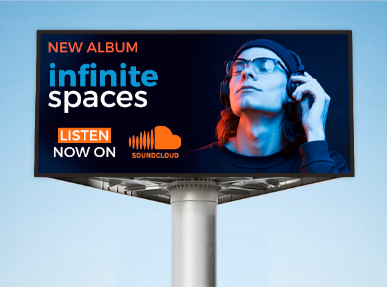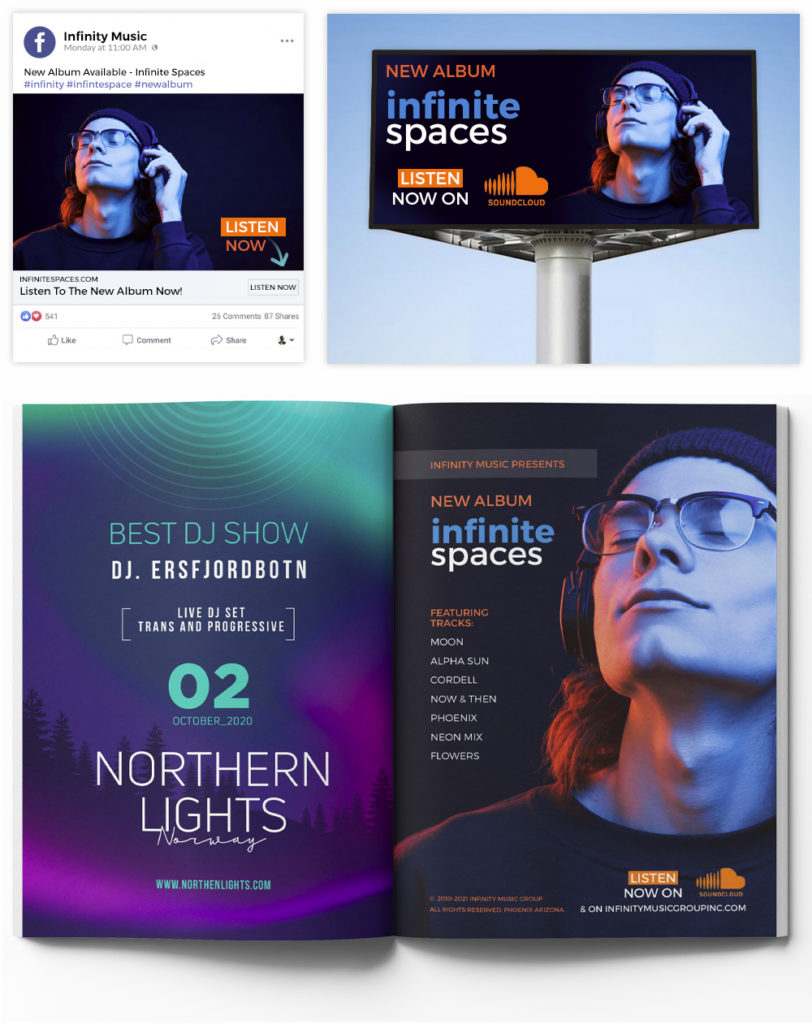Creative differences in DOOH and their extensions

If you are a brand manager, media buyer, entrepreneur, or small business owner, chances are you have placed ads anywhere from social media to billboards and everywhere in between. Did you know your messages should vary slightly for each media? For example, what your ad looks like in a print magazine ad should be quite different from a digital billboard on the side of the road. The most important differences being verbiage structure and quantity as well as the call to action. Taking the omnichannel advertising approach is a no-brainer — taking advantage of its full potential with your creativity is completely up to you.
Selecting the right message for your ads is critical. Adjusting that message to better suit the platform it is displayed on is a step further to optimal return on investment of your advertising dollars as your ads will be more effective. For example, out of home ads should be 7 words or less. So, modifying your headline/call to action into its simplest form is a skill that you should learn. If that same ad is 12” from your face, you can get away with a bit more wording to showcase product benefits in your creative. Once you’ve mastered the art of prioritizing and trimming copy, you’ll be on your way to seeing optimal results from all your advertising channels.

A 2019 Nielsen OOH Advertising study indicated two-thirds of smartphone users took action after seeing an OOH ad, increasing overall ad engagement.
An excellent example of DOOH working in tandem with mobile devices to increase engagement with a brand comes from JLo Beauty. In New York City, the MTA Subway trains were wrapped with a QR code the public could scan with their mobile device leading them directly to a landing page where they then could browse JLo’s full collection, share their contact information, and follow all of her social media accounts in an integrated and seamless experience. Commuters through Times Square and Grand Central Station could experience the mobile-driven experience resulting in 137 million people reached on Instagram, 45 million people reached on Twitter and over 218 thousand views on YouTube.
With DOOH, brands have the opportunity to engage with audiences in creative and effective ways. The National Health Service of the UK wanted to raise awareness towards the life-saving power of blood donations. Their interactive digital billboard showed real patients in need of blood and asking those passing to help by filling a virtual blood bag. The audience would use their mobile devices to become virtual donors and connect virtual IVs to their arms. As the virtual blood left their body, the digital billboard bag would fill and show a patient healing into healthier transformations of themselves. Using the combination of mobile devices and digital billboards was extremely effective in creating engagement and reaching the ultimate goal of raising awareness of their cause.
Your call to action is going to differ drastically between social media, OOH, and other forms of advertising. An ad that is shown on a smartphone or computer generally has a clickable call to action button: visit our site, buy now, follow us, etc. while an ad on a billboard or on an Uber OOH screen will have a call to action that directs people to remember their name or website or to visit their physical location. Putting yourself in the viewer’s perspective based on each media format will help you create your message and call to action more appropriately for said format.


